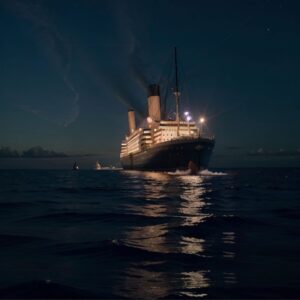On April 10, 1912, the RMS Titanic, the largest and most luxurious ship of its time, set sail on its maiden voyage from Southampton to New York. Promoted as “unsinkable,” the ship symbolized human innovation and progress. However, just four days into its journey, disaster struck. On the night of April 14, Titanic collided with a massive iceberg in the North Atlantic, leading to one of the deadliest maritime disasters in history.
The iceberg tore into the ship’s hull, causing the supposedly impenetrable vessel to flood rapidly. Panic spread as passengers and crew realized the grim reality—there were not enough lifeboats for everyone on board. As the freezing Atlantic waters rushed in, the Titanic began its slow, agonizing descent beneath the waves. By the early hours of April 15, the ship had completely vanished, taking more than 1,500 souls with it. The tragedy exposed the dangers of overconfidence in technology and led to sweeping changes in maritime safety regulations.
Survivors recalled haunting scenes of chaos and heroism—families torn apart, musicians playing to calm the terrified crowd, and crew members sacrificing themselves to save others. The sinking of the Titanic was not just a catastrophe; it was a stark reminder of nature’s power and humanity’s vulnerability. Today, the wreck of the Titanic lies at the bottom of the ocean, a solemn memorial to those who perished on that fateful night.
The story of the Titanic continues to captivate the world, reminding us of both human ambition and the tragic cost of hubris. Its legacy lives on through books, films, and ongoing explorations of the wreck, ensuring that the lessons learned from its demise are never forgotten.

